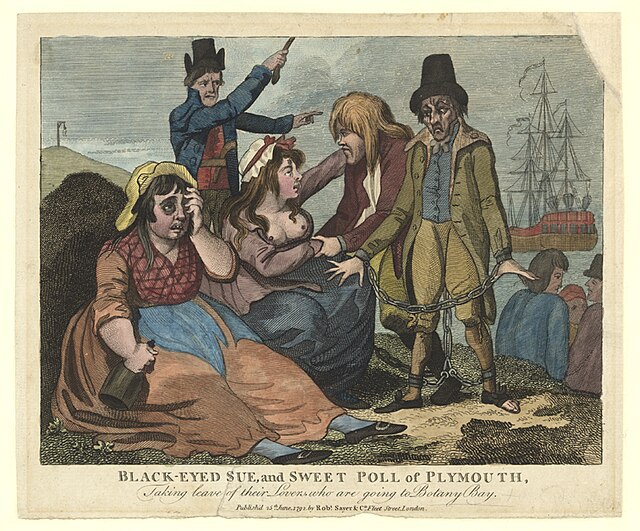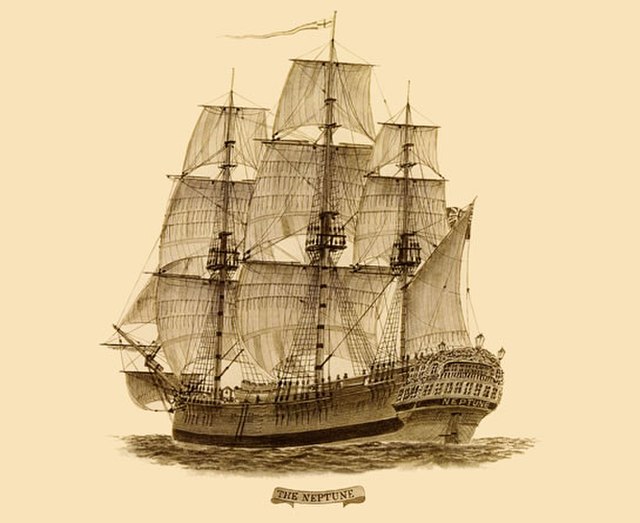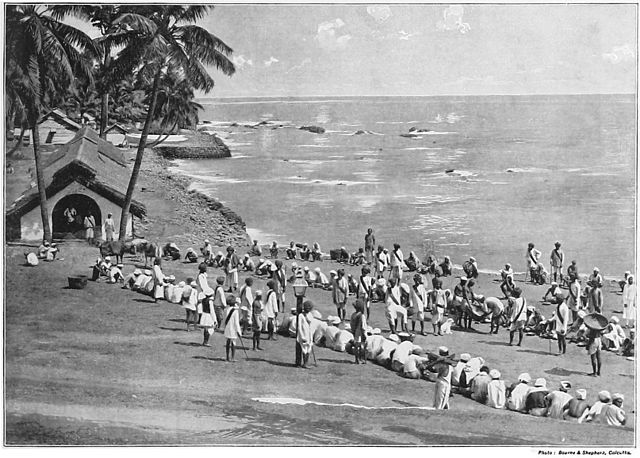Penal transportation was the relocation of convicted criminals, or other persons regarded as undesirable, to a distant place, often a colony, for a specified term; later, specifically established penal colonies became their destination. While the prisoners may have been released once the sentences were served, they generally did not have the resources to return home.
Women in Plymouth, England, parting from their lovers who are about to be transported to Botany Bay, 1792
Neptune, a 19th-century convict ship that brought prisoners to Australia
Joseph Lycett, an artist transported for forging bank notes, The residence of Edward Riley Esquire, Wooloomooloo, Near Sydney N. S. W., 1825, hand-coloured aquatint and etching printed in dark blue ink. Australian print in the tradition of British decorative production.
1848 Woodcut of HMD Bermuda on Ireland Island, Bermuda, showing prison hulks
A penal colony or exile colony is a settlement used to exile prisoners and separate them from the general population by placing them in a remote location, often an island or distant colonial territory. Although the term can be used to refer to a correctional facility located in a remote location, it is more commonly used to refer to communities of prisoners overseen by wardens or governors having absolute authority.
Inscribed stone honouring an Irish prisoner in the Australian penal colony of Botany Bay
Penal colony in the Andaman Islands, British Raj (c. 1890s)






